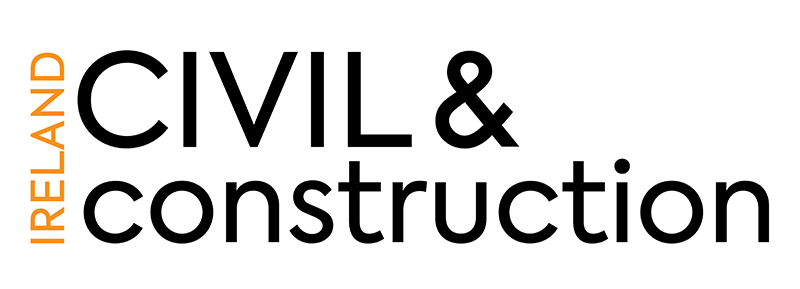
In this month’s ConstructionTech, columnist Carol Tallon chats to Autodesk’s Marek Suchocki and Kirby’s Mark Danaher about the role of data across Ireland’s construction sector and increased industry adoption.
The AEC sector is one that typically learns by doing; expertise through experience. This month, Construction Tech explores the gap between daily practice and best practice when it comes to digital adoption, and finds out what the wider industry can learn from the leaders in this space.
Harnessing the Data Advantage
Marek Suchocki, speaking about Autodesk’s recently published report on ‘Harnessing the Data Advantage in Construction’:
“We interviewed over 1000 candidates across Europe and looked into the way that data was being used within project teams across the regions to gain insight into trends or patterns that are emerging in relation to data acquisition, data quality, and data use. We looked at a wide range of data collected on construction projects, including data during the planning processes, activity sequencing, progress monitoring, and snagging after installation. The report also identified analogue and traditional CAD or paper-based approaches with a view to figuring out how those processes might be replicated using a digital-enabled workflow. Critically, we then looked at the value to decision-makers of digitising the process and how insights afford decision makers better opportunity to make judgments and assess risks.”
When comparing the ‘data advantage’ through digital adoption across various regions, there is a demonstrable degree of maturity emerging from Ireland and the UK which, according to Marek, may well be attributed to the UK Government’s BIM initiative over the past decade.
“We used the foundation of BIM, so it was really changing the demand side and the industry had to align. In the Irish and UK market, there are quite a few substantial businesses – both from the design project management and construction side – meaning they perhaps have more capacity to commit to a change rather than SMEs.”
Technology laggards vs. best practice: How large is the gap?
“The gap is maybe 25 percent between the best-in-class and the worst. However, we have to respect that this report is based on a sample size of 100 per country. In reality, no country has made a huge leap forward, although the UK and Ireland are arguably in a front-running position.” Marek explains.
Speaking about the Kirby experience, Mark Danaher of the specialist contractor explains that just five or six years ago, the company was completely paper-based. This meant everything done onsite was tracked by Excel checklists, which had to be marked up and filed at the office, where access was limited.
“As the specialist contractor, we are the intersection point of all of the data so we now have a whole digital construction department. This enables us to receive data from the main contractor and then refine that for integration with our own generated project data. We went digital a number of years ago in order to manage 3D Models and drawings, so we are digital from the design stage. Initially, we started with safety and quality as the two most important elements to digitise. Have we fully digitised across all of our projects? No, but we have digitised projects for our key clients who are tech companies and we move with them.”
Quality in, quality out
Quality in, quality out (QIQO) dictates that the output or insights of any analytical model are only as good or as accurate as the data being collected. When asked about quality data collection, Mark explains that the Kirby team operates on the IPD, or integrated project delivery, model that prioritises early contractor engagement to encourage stakeholder buy-in. This buy-in ensures better quality input from the pre-construction stage.
Measurement
“Hyperscale data centres account for a significant portion of our business at the moment. On the first data centre we did, we tracked how long it took to do quality control checklists in the field, snagging in the field, document control and all of our drawings and model coordination manually and paper-based. For this, we just measured the time everything took. So we surveyed all of the site crews in different areas and we monitored how long it took them to do a QC checklist the old way including filing it and then having to go looking for it.
Then, using BIM 360 (now the Autodesk construction cloud), we timed the very same activities and workflows, and we monitored them digitally. The labour hours saved by use of BIM 360 were significant, including loss of information, looking for information, capturing the information and instant access to live data for the senior management team. By way of example, on our digital snagging, we saved 2,000 hours of time across two projects. We saved a further 1,000 hours on our digital QC audits. We also saved about 1,000 hours by digitising the red lining process (handover of final 2D drawings that reflect all installation changes). So 4,000 hours were saved across two projects, on average, just on those three elements.”
Advantages of a data strategy for
contractors
Marek: “A data strategy is more than just acquiring a piece of software or set of tools. It’s actually seeking to establish that there is a culture within the whole project team to capture quality data. The technologies do some of that for us because they themselves are structured, but we then have to organise the way data has to flow from the lowest tiers of the supply chain, up to those who are effectively aggregating the information and reporting. From a data strategy perspective, it has to start from the top of each engaged organisation.”
Where to start?
Marek: “Start small. It’s the old “How do you eat an elephant?” conundrum. You do it piece by piece and concentrate on the key priority areas. For example, whether it’s a health and safety challenge that the organisation has been facing, or perhaps there are lots of snags. There may be certain repeat things that have been evidenced on previous projects. How can we tackle those? How can we focus on those? Start with a more structured and smaller-focused approach until you can get the buy-in from all involved. Focus on the data quality and then expand that into adjacent areas in order to get that wider benefit.”
Foster a culture of innovation
Marek: “At Autodesk, we are constantly working with our customer base to truly understand the issues faced and the challenges to be overcome. We have customer success teams who engage the industry and we provide direct and indirect training through our partner network. Our approach is to show the benefits and eliminate the fear or risk of investing in new technologies.”
Mark: “The most successful approach for us has been to pilot projects on certain sites and then use that experience to show other site teams the advantages of engaging with new software and new systems. When efficiencies emerge, we have other site teams requesting access to the new technology and training. In a way, you need to prey on people’s natural curiosity; work with them and show them what you’re trying to do, rather than dictating changes. At the end of the day, these tools really help our teams and it makes their audits easier.”
ConstructionTech columnist Carol Tallon is the CEO of Property District and advises innovators, investors and members of the traditional industry on urban planning, property, construction and smart city technology trends through Proptech Ireland. www.propertydistrict.ie
